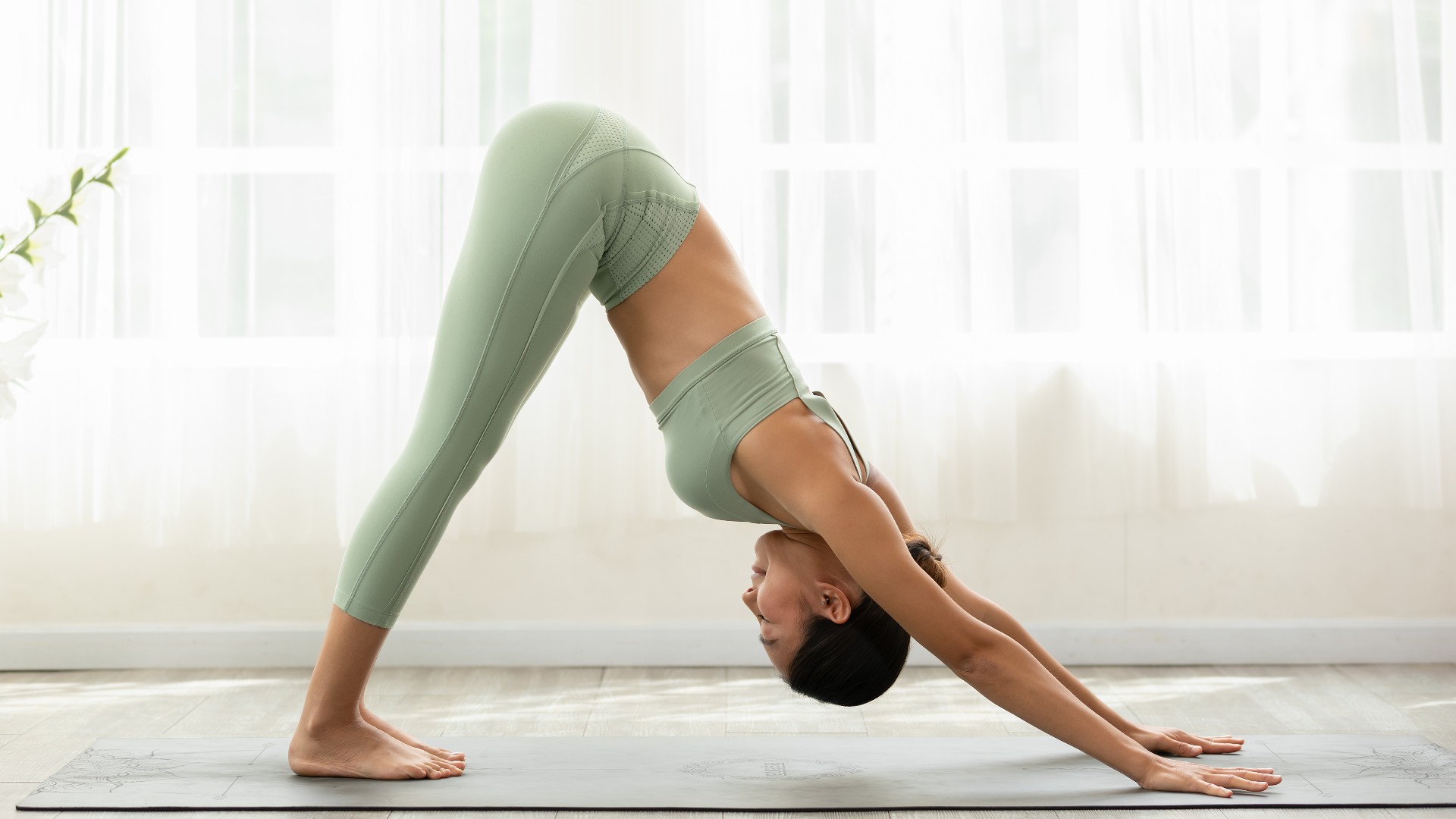
I’m a total yoga lover. Nothing used to stop me from rolling out my yoga mat and jumping two-footed into class. You name it — hot yoga, heated Vinyasa, power, Kundalini, Ashtanga, or Yin — I’ve downward-dogged my way through it (some more keenly than others).
It’s not just the benefits of yoga that keep me coming back for more — although there are plenty of them, according to the American Osteopathic Association: improved mental well-being, better flexibility, reduced anxiety, increased muscle strength and tone, and injury prevention, to name a few. But for many yogis, it’s the simple joy of finding exercise that connects mind, body, and breath.
As a fitness trainer and writer, my free time goes between yoga classes and CrossFit for strength and conditioning. It’s a balance I’ve rarely nailed, so I decided to diligently dedicate a daily yoga practice no matter what, morning or night, for several weeks. Here’s what I noticed when I bedded down on one of the best yoga mats for home workouts and rediscovered flow-state.
Are you struggling with knee pain? I tried this yoga for knee pain, and it’s top shelf.
Yoga benefits
A photo posted by on
You don’t need to balance on your head or resemble a pretzel to find the benefits of regular yoga. Turning up and giving it a go could positively impact your physical and mental health.
Nailing a new pose might feel good and look great for the Gram, but yoga is far more concerned with everything but the poses themselves. Traditionally, yoga has been a spiritual practice aimed at uniting mind and body, cultivating self-awareness and connecting with your breath and body through meditation.
Research cites yoga as a type of “mind-body fitness” that could promote strength, flexibility, and balance and improve blood flow, increasing oxygen delivery to your muscles and improving muscle endurance and function. Through a series of deep breaths and slow movements, regular practice could even improve range of motion and bone and joint health, keeping muscles supple and protecting you from injury.
Over time, and partly due to mainstream appeal, the focus has shifted somewhat, providing a more physical practice. You might have seen modern forms of yoga concern themselves with faster, aerobic styles like power yoga that appeal to wider audiences seeking a workout. Wherever you find yourself on the broad spectrum of yoga, enjoying your practice is paramount!
Get instant access to breaking news, the hottest reviews, great deals and helpful tips.
I did yoga every day for two weeks — here’s what happened to my body
Here’s what I noticed physically and mentally from practicing yoga more regularly.
I felt calmer
Research like this 2012 study of yoga students found that the frequency of home yoga practice was a huge factor in measuring improvements to well-being, fatigue, and mindfulness rather than class length.
I opted for a short but faster-paced Vinyasa yoga to start the day or a lengthier Yin yoga class in the evening, which is restorative, focusing on holding poses for several minutes to release muscle tension. I found morning classes made me feel amazing after, but I couldn’t switch off to enjoy the moment.
That is what meditation is for — training the mind to listen, acknowledge, and move on. But it only comes with regular practice. I only tested this out for a few weeks, but even after the first week, future-me began to switch off more, and present-me began to relax. I went into my day with more clarity and feeling energized rather than distracted, but I’ve got a way to go.
My sleep hygiene improved
Bedtime yoga classes (this bedtime yoga routine with 14 million views is worth a try), did wonders for helping me wind down before sleep. I teamed this with a short 10-minute on the VR meditation app Tripp using night mode, which I found incredibly soothing.
According to the Sleep Foundation, blue light from electronic devices messes with your sleep cycle, keeping you more alert at bedtime. The International Journal of Yoga found that yoga has a calming effect on the mind, better preparing the body to sleep. By focusing on breathing, your body can switch from flight-or-fight to the relaxed state of the parasympathetic nervous system, lowering your heart rate, blood pressure, and cortisol levels.
After just 20-30 minutes of daily yoga, I felt more ready for sleep. The constant — who text me? Do I need to reply to that work email? What class am I going to teach tomorrow? Felt less urgent, and I could reach for slumber rather than my smartphone.
I felt more flexible
It’s incredible what yoga can do for your body. On a physical level, my range of motion feels noticeably better, and my muscles are ready for exercise, even after a short yoga session. I use yoga as a standalone practice, but 10, 20, or 30-minute yoga classes can be beneficial before or after strength training programs or cardio workouts to warm up muscles and increase blood flow.
Yes, a lengthier yoga class gives your body more time to achieve depth and intensity in poses and stretches, and this translates to similar results when lifting weights, but that doesn’t mean shorter practices aren’t useful. You can still access yoga benefits in a short class, especially by practicing Yin yoga. I found that 20-minute hip and shoulder-focused Yin classes every other day helped release muscle tension, aid relaxation, and improve mobility in the targeted area before lifting weights. It’s the most open my hips have felt in months.
More from Tom's Guide

Sam Hopes is a level 3 qualified trainer, a level 2 Reiki practitioner and fitness editor at Tom's Guide. She is also currently undertaking her Yoga For Athletes training course.
Sam has written for various fitness brands and websites over the years and has experience across brands at Future, such as Live Science, Fit&Well, Coach, and T3.
Having coached at fitness studios like F45 and Virgin Active and personal trained, Sam now primarily teaches outdoor bootcamps, bodyweight, calisthenics and kettlebells.
She also coaches mobility and flexibility classes several times a week and believes that true strength comes from a holistic approach to training your body.
Sam has completed two mixed doubles Hyrox competitions in London and the Netherlands and finished her first doubles attempt in 1:11.
